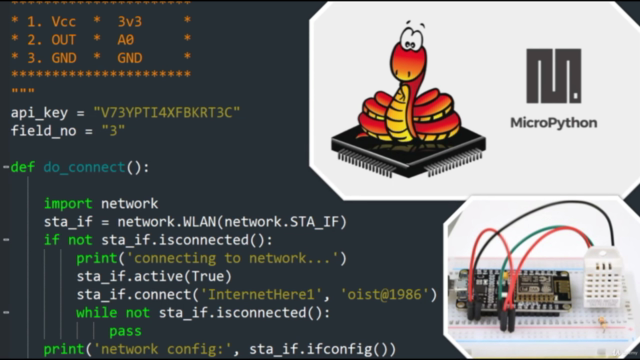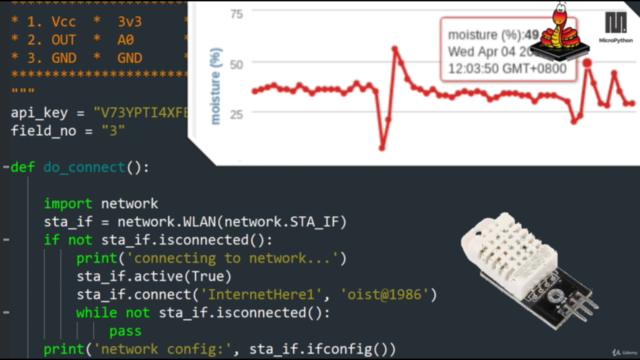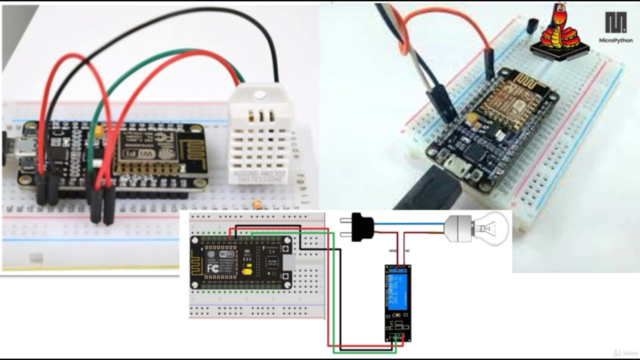MicroPython Mega Course: Build IoT with Sensors and ESP8266
Learn Micro Python , ESP8266, Home Automation, Sensors: Temperature, Humidity, Light, Actuators: Relay
4.31 (47 reviews)

286
students
5 hours
content
Dec 2020
last update
$44.99
regular price
What you will learn
Program IoT devices using MicroPython (Python for Microcontrollers)
Build IoT
Sensor Interfacing with ESP8266: Light, Temperature and Humidity Sensing
Actuator Interfacing with ESP8266
Hardware (Electronics) Interfacing
Use IoT Cloud to Upload Data (Collect)
Use IoT Cloud to Apply Condition (Analysis)
Act on IoT Data (Act)
Screenshots




Related Topics
2669228
udemy ID
11/23/2019
course created date
10/18/2020
course indexed date
Bot
course submited by